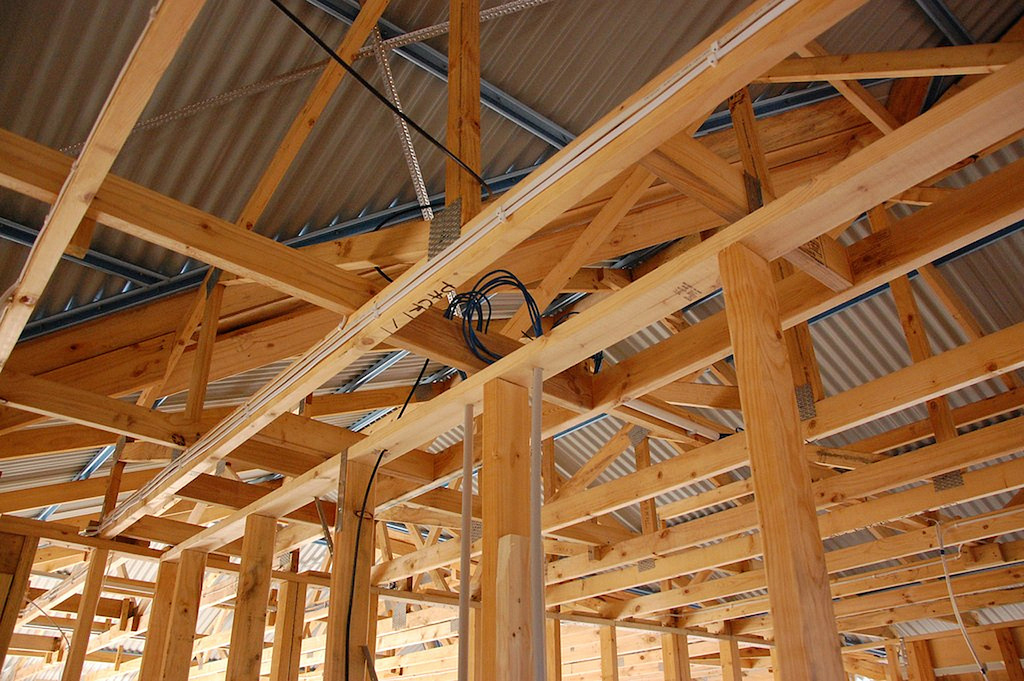How to Install an Ethernet Network in Your Home
Building a new home? Install a network during construction and avoid unsightly jumbles of cable.

Millions of homes around the world have painfully visible signs of Ethernet networking capabilities. Network connections are usually evident by the number of cables tucked into corners, stapled across the ceiling, or jumbled behind devices such as the home computer or the television. However, you can clean up this untidy mess by building your networking needs directly into your home. Essentially, your Ethernet cables will be running through the walls much like your electric cables do.

Installing Ethernet cable within your walls isn't a very difficult process. In fact, the hardest part is installing the drywall. Ethernet cables are a major addition to your new home, but the benefits are worth the effort.
Why Build an Ethernet Network Within the Home
There are a variety of reasons to build a network into your new house, all of which are ideal in today's society. While some of them are blatantly obvious, others are merely an extension of the construction of your new home. Regardless of your reasons, building the network has its advantages.
-
Neatness. Instead of having a tangle of Ethernet cabling strewn about your home, installing main lines through your walls can eliminate a large portion of this mess. Fewer cables can make the home seem more tidy, and you don't have to worry about tripping over the cables as you walk from room to room.
-
Value. Contrary to the belief of some appraisers in the United States, adding built-in Ethernet capabilities increases the value of the home on a personal level if the future buyer is a computer geek. As more and more homes accommodate technology, built-in networking can help drive the sale.
-
Aesthetics. It doesn't hurt to change the look of the home. Because installing Ethernet cabling can involve removing the drywall from your walls, you have an opportunity to perform repairs. You can reinstall insulation, move power sockets to more ideal locales, paint your walls a new color, reinforce beams that may have previously suffered unseen damage, and more.
What Is Needed in Order to Build This Network?
To install an Ethernet network during the construction of your new home, you would need only to concern yourself with four main network elements (aside from the construction of drywall and framework).
-
Central Hub. The central hub can be built in a number of ways, depending on your needs. Many developers will utilize the form of networking switch that can handle the number of connections the locale requires. Technically, a basic four-port switch could accomplish your goals provided you want only to supply network access to four separate locations. This central hub needs to be easy to access and built to accommodate Internet devices such as DSL or cable modems and other expansions.
-
Ethernet Jack - The RJ45 Ethernet jack is much like the phone jack you find built into the walls of your home. However, the Ethernet jack is much larger and should have a support housing. Although the support housing is not absolutely necessary, it makes the installation more professional and cleaner and makes attaching the faceplate to the wall much easier.
-
Faceplate. The faceplate for your jack serves the same purpose as the ones on your phone jacks and power sockets. It provides an easy and stable location to plug in an Ethernet cable. Faceplates come in many styles, and can accommodate whatever kind of network you are installing, whether you need one or four ports.
-
Ethernet Cable. When it comes to running Ethernet cable, you want to estimate the future loads from the various rooms of your home. Each location could host a variety of devices using that single connection. Ratings for Ethernet cables don't merely suggest the connection speed for the network – they also indicate how much bandwidth the cable can handle. For example, 20 computers accessing the Internet on a Cat5e cable could outperform 20 computers on a Cat5 cable.
Depending on the type of cable you install, your effective Ethernet distance is 328' from the switch of your network. If you locate your switch in a centralized location within your home, this 328' gives you more than enough length to run cables to a variety of places.
In a family environment where everyone has a desktop computer in the home, networking cables can be stretched everywhere. You could switch to wireless networking, but you just can't beat the stability of a hard-line connection. Many homes are being constructed today with networking hubs built into them. It is a practical and more efficient way to make sure that everyone in the home can get online without burying the home in a snarl of Ethernet cables.
Madoline Hatter
This article is contributed by Madoline Hatter. Madoline is a freelance writer and blog junkie from ChangeOfAddressForm.com. You can reach her at: m.hatter12@gmail.com.
Website: changeofaddressform.com
